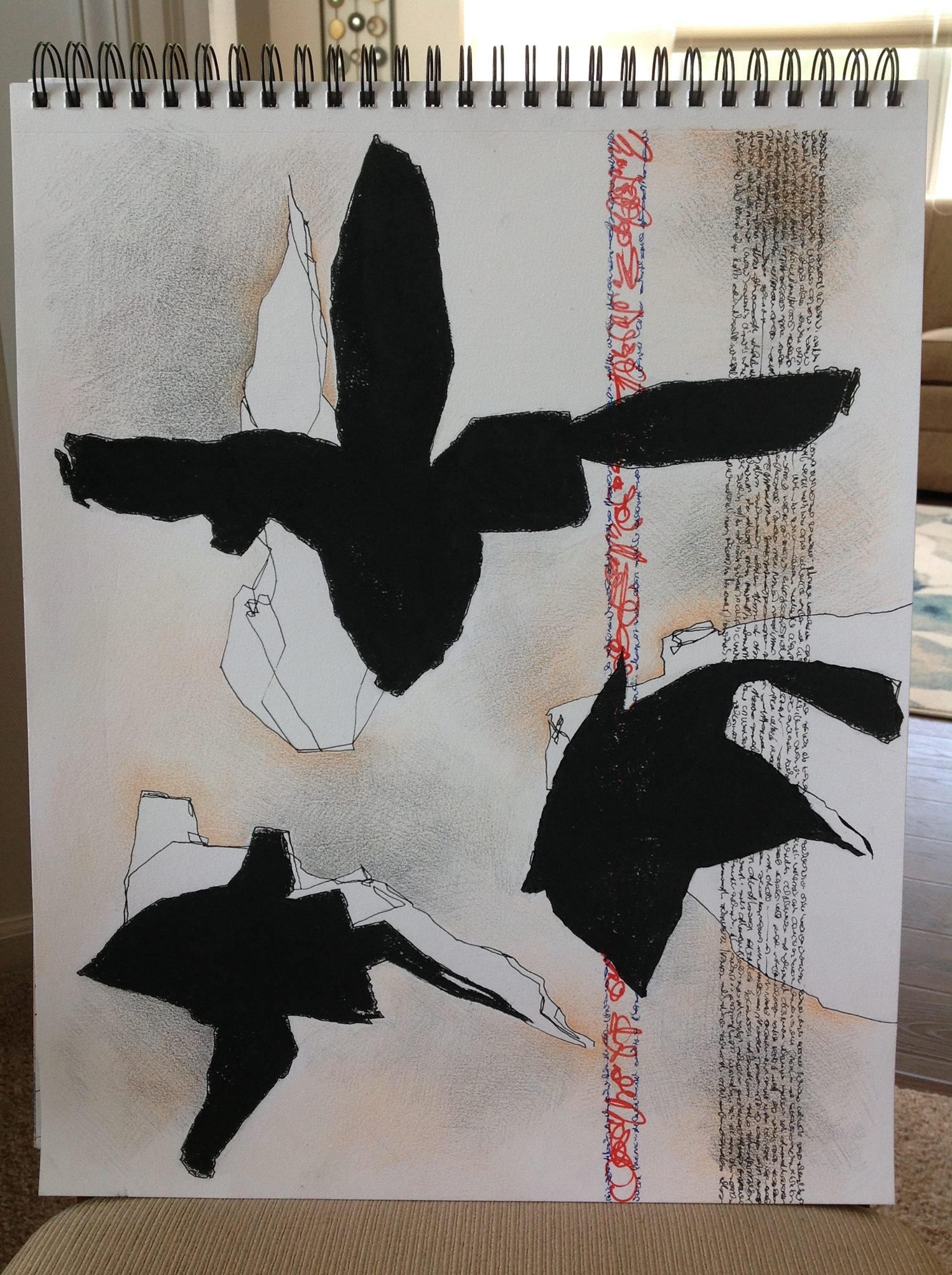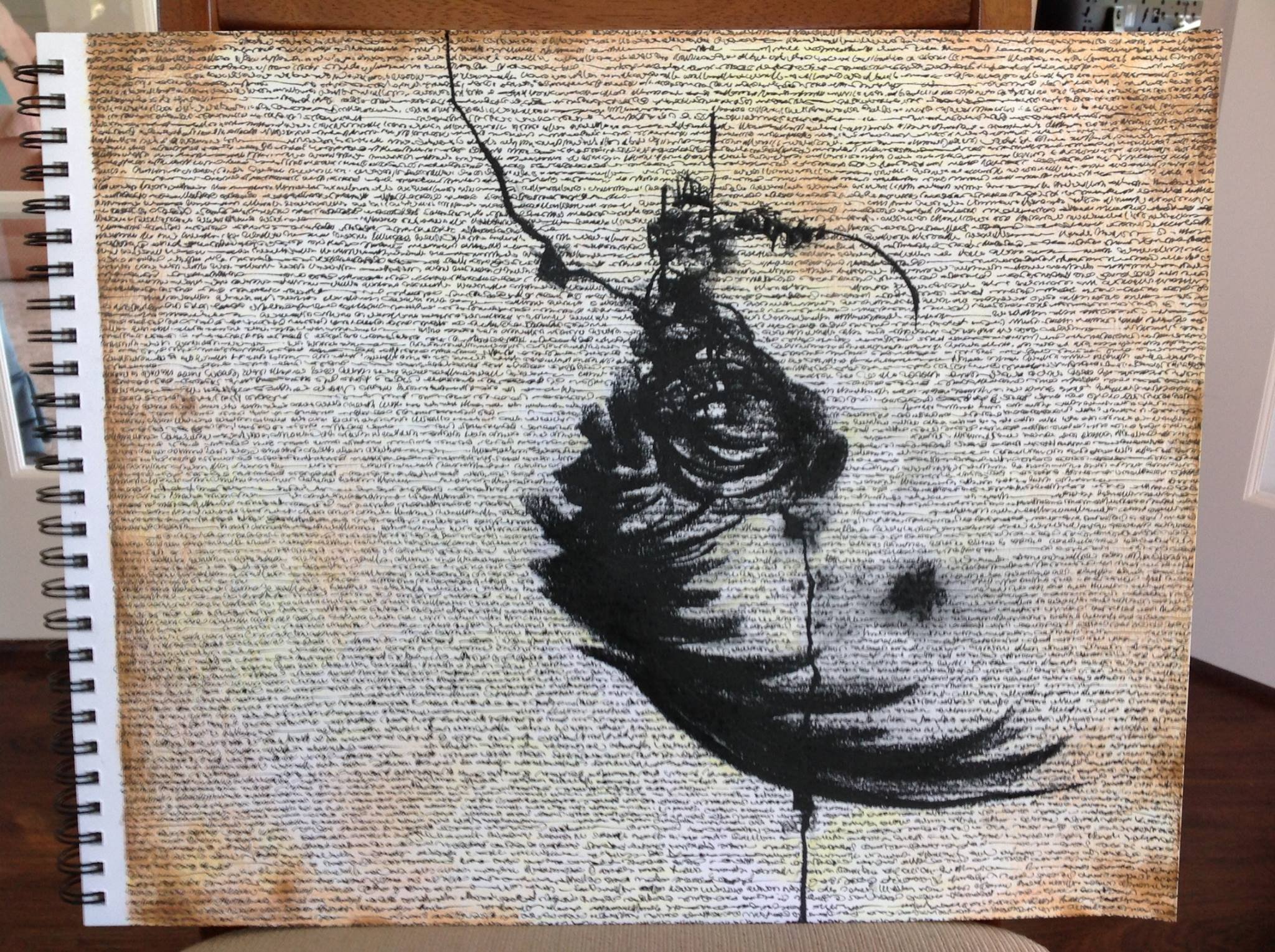Corvus Corax: Symbols of Majesty in Art and Culture
In the vast tapestry of human culture, few creatures command the reverence and intrigue quite like the raven. As subjects of ancient mythologies, symbols in literature, and muses to artists across time (including this artist), these ebony-feathered birds have soared through the annals of history, leaving an indelible mark on our collective consciousness. Join me as we delve into my personal connection with them; explore their appearance in art, culture, and symbolism.
Wolf Birds
For me, since I was young, ravens have been a touchstone. They are clever and endlessly fascinating birds: they count, do tricks in the air, have social skills, use a complex communication system, can do puzzles, and are incredibly smart. Because of my fascination with these amazing birds, they factor heavily in my artwork - whether representationally, in abstraction, or very subtly featured. (I’ve included some examples of raven imagery in my work in various mediums.) Even titles of my artwork are an homage to ravens: Conspiracy in Theory, Hoarse Cries, Corvid’s Cross, and Wolfbird’s Perspective.
Ecologists call them ‘wolf birds’ because they have a symbiotic relationship with wolf packs: ravens follow wolves to find food sources and the wolves essentially share their carrion with ravens (and, being the smart corvids they are, ravens will cache some food for later!). They have even been known to play with wolf pups and establish a special bond within wolf packs (1). This symbiotic relationship intrigues me and has caused me to explore such relationships in my own artwork (see my artist’s statement).
Wolf birds and wolf. Yellowstone.org (https://www.yellowstone.org/naturalist-notes-wolves-and-ravens/). Accessed 27 April 2024.
Symbols
In the realm of art, ravens have often served as potent symbols, evoking a sense of mystery and depth. From the haunting canvases of modern abstract art to the serene landscapes of New England art, these birds have found their place amidst the strokes of the artist's brush. Their sleek forms and playful nature create evocative imagery to stir the soul and spark the imagination. Ravens find their place amidst the elements of nature art and ocean paintings alike, and add a touch of intrigue to nautical-themed decor - like my Tradition and Sea Fog paintings; you can see little ravens marching along the bottom (ocean line) while fog blankets the horizon line.
Alexander Morris, Tradition and Sea Fog No. 2 [acrylic on panel]. Artist’s Studio.
Cultural Representations
Across various cultures, ravens feature prominently in folklore, literature, and religious symbolism. In Celtic mythology, ravens are associated with the goddess Morrigan, who is often depicted accompanied by these birds as messengers of doom, death, or victory in battle (2). In Western literature, from Edgar Allan Poe's haunting poem "The Raven" to the legends of King Arthur, ravens embody a sense of mystery and foreboding. The ravens at the Tower of London stand as iconic symbols of British folklore and tradition. Legend has it that should these ravens ever leave the tower, the kingdom will fall. Thus, they are cared for with great reverence, their presence a testament to the enduring power of myth and superstition.
In conclusion, the raven stands as a timeless symbol of mystery and majesty attached to human culture. From the heights of art and mythology to the depths of our collective imagination - and a guiding light for this artist’s life - these ebony-feathered creatures continue to captivate and inspire us, anchoring our mythos, and reminding us of the enduring power of symbolism.
L-R: Conspiracy in Theory, Corvid’s Cross, Post-storm Sunsets, and Wolfbird’s Perspective.
© 2024 Alexander Morris. All rights reserved. All images, iconography, symbols, or similarities thereto, are the property of Alexander Morris and may not be used without his permission.
References:
Naturalist Notes: Wolves and Ravens; Yellowstone.org. https://www.yellowstone.org/naturalist-notes-wolves-and-ravens/. Accessed 27 April 2024.
The Morrígan, Wikipedia. Wikimedia Foundation, 26 April 2024. https://en.wikipedia.org/wiki/The_Morr%C3%ADgan#:~:text=The%20Morr%C3%ADgan%20is%20mainly%20associated,about%20victory%20over%20their%20enemies. Accessed 27 April 2024.





